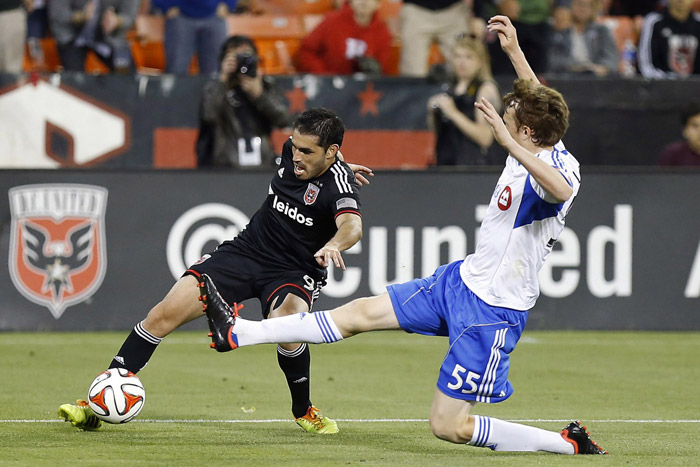Major League Soccer is hard to compare to anything—one might say it stands alone, but in the least superlative sense possible.To compare it to its peer leagues in Europe would be to instantly render this article useless—the gulf in playing quality is noticeable even to someone whose entire knowledge of soccer comes from playing video games. A comparison to other North American professional sports leagues would, be similarly dubious.
This past weekend, I went to the Montreal Impact’s season finale against D.C. United, a meaningless match for both teams. The Impact was already out of playoff contention, sitting in the bottom of the Eastern Conference, and United was safely at the top. The day began with the long walk along Sherbrooke to Stade Saputo, a small corner of the Olympic Park complex with space for 20,000 fans.
The real event of the game was the retirement of Marco Di Vaio, an Italian player formerly of Juventus and most recently Bologna Football Club 1909, who joined the Impact in 2012 for the team’s inaugural season as an MLS team. The tribute to Di Viao, which drenched every aspect of the game—the match program, tweets shown on the stadium screen, and so on—began with a tribute clip of Montreal citizens and luminaries signing the player’s jersey, complete with the heart-string-tugging music, culminating in the team presenting Di Vaio with a painting before the game. The whole spectacle felt distinctly forced. After a moment of silence for ‘the victims’—neither the St-Jean-sur-Richelieu nor the Ottawa attacks victims were mentioned by name—and the anthems, the game kicked off.
At that point, the skies opened up, dumping first a drizzle, then a torrent on the stadium. Our seats were in the general admission area, behind the goal on the western side of the stadium. This was also the area occupied by the team’s ‘supporters club,’ the Ultras Montreal. Impassioned chants, loud drums, and clapping were concentrated in this section. To their credit, while most of the other spectators, myself included, retreated to the dry upper stands, the Ultras remained in the rain, chanting and clapping away. At the start of the match, some of the chants featured vague fascist gestres, such as synchronized arm-straightening, but that likely reflects the relative rarity of this expression of fandom in other sports in North America. Still, it created quite the atmosphere.
The game itself wasn’t much to write home about. After an early spell of possession, D.C. United seemed to play catch-up for most of the first half, conceding a goal to Di Vaio in the 26th minute. The visitors didn’t get off a decent shot until near the end of the first half. The second half was no better. Players missed passes, slipped a bit too frequently in the rain, and the play was often anemic. In a lonely corner of the stands opposite the other goal were the District Ultras, the supporters group for the United, occasionally waving a team flag.
Perhaps their cheering had some effect. In the 86th minute, just as the game looked to be heading towards an uninspiring victory, United scored. The crowd booed lustily, but it seemed to bring a spark to the final minutes of the game, with spirited attacks from both teams. Di Vaio walked off the field before the end of the game to a standing ovation and a pause from both sides. Afterwards, the play continued into five frantic minutes of stoppage time. After one too many attempts at goal, a United ball fell to an Impact player dashing down the field. He struck the ball, and it floated left of goal, harmlessly going out of bounds to end the game. It was a fitting metaphor for the play on offer as a whole.
And with that, we left the game, drenched, with the chants for Di Vaio echoing in the distance.









